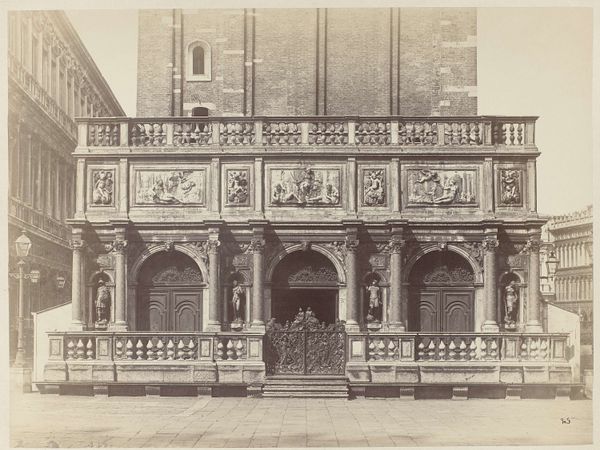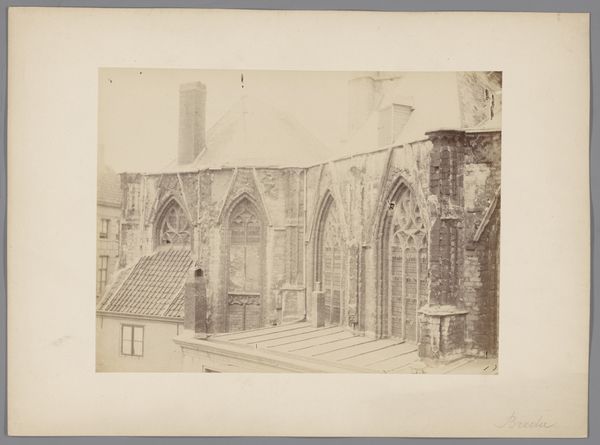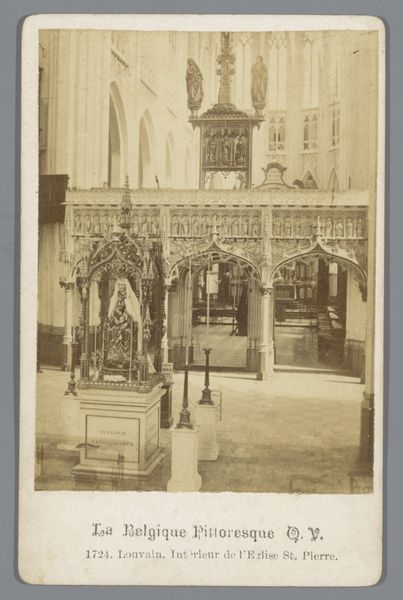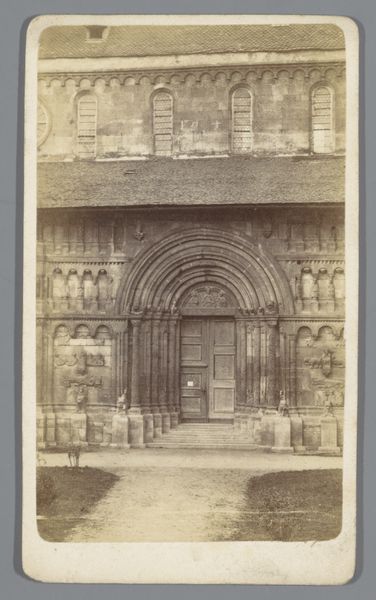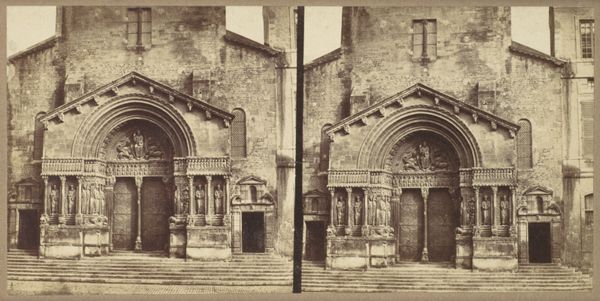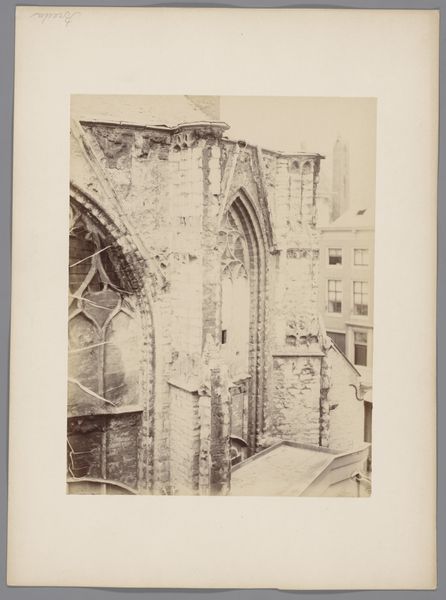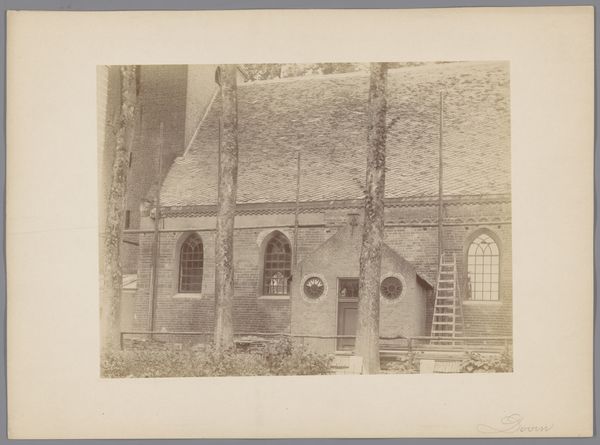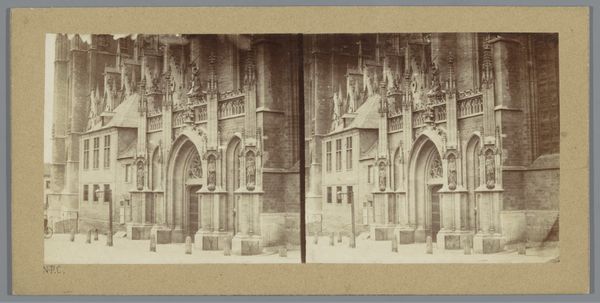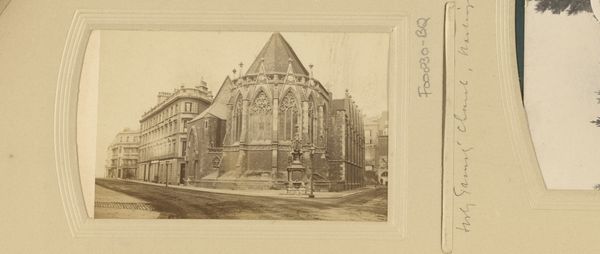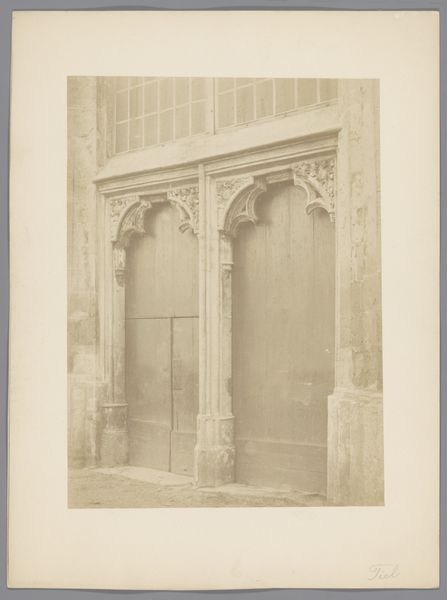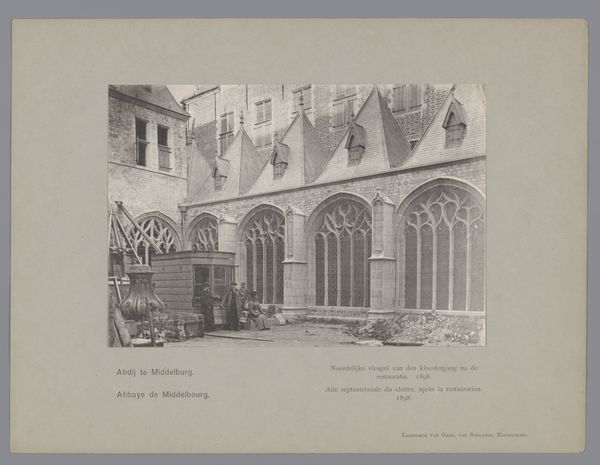
photography, albumen-print, architecture
aged paper
toned paper
pale palette
muted colour palette
white palette
photography
cityscape
tonal art
albumen-print
architecture
realism
Dimensions: height 199 mm, width 252 mm, height 232 mm, width 294 mm
Copyright: Rijks Museum: Open Domain
Curator: Giacomo Brogi, between 1856 and 1881, captured this albumen print titled "Westzijde van de Orsanmichele te Florence." It presents a detailed view of the Orsanmichele church’s exterior in Florence. Editor: It's striking how the muted color palette emphasizes the architectural details. The photograph feels very still, almost like a stage set waiting for actors. There is something about the contrast between the stonework and the overcast sky that is very haunting. Curator: Absolutely. Brogi was keen to document the transformation of Italian cities, specifically in the context of its own burgeoning nationalism. Photography, with its then-novel indexical nature, became a crucial tool for recording architectural heritage and its role in civic identity. Notice the tonal art at work. The building, through Brogi's perspective, appears as both permanent and also ephemeral given the soft washes of light. Editor: Considering the period, it's also important to view this photograph through the lens of access and power. Who was Brogi photographing for? And whose story about Florence and its history does this particular image tell? This image makes me think about labor, actually –who built the structure itself, and what conditions? I wish the image did more to suggest social context in that way. Curator: I agree there's always a question of whose narrative is privileged. In this case, Brogi catered to the interests of wealthy tourists and patrons eager to take back souvenirs of Italian cultural glory and he found great financial success with it, eventually passing down his thriving studio to his sons. That detail informs what he chose to photograph. But the photograph itself also allows us, from a 21st-century perspective, to then unpack those very dynamics of representation. The soft focus and composition elevate the building, no question. But it becomes useful visual data for a modern interrogation, wouldn't you say? Editor: I would. This isn't just about aesthetic appreciation. It's about engaging critically with the power dynamics inherent in image-making. I am especially compelled by thinking of the architectural context as it intersects with modern labor practice. Curator: Seeing how the visual past reverberates in our current dialogues, making it not just an object of study, but also a catalyst for change. Editor: Right. It’s not just about admiring the church but acknowledging the past while asking how we build our future, literally and figuratively.
Comments
No comments
Be the first to comment and join the conversation on the ultimate creative platform.
